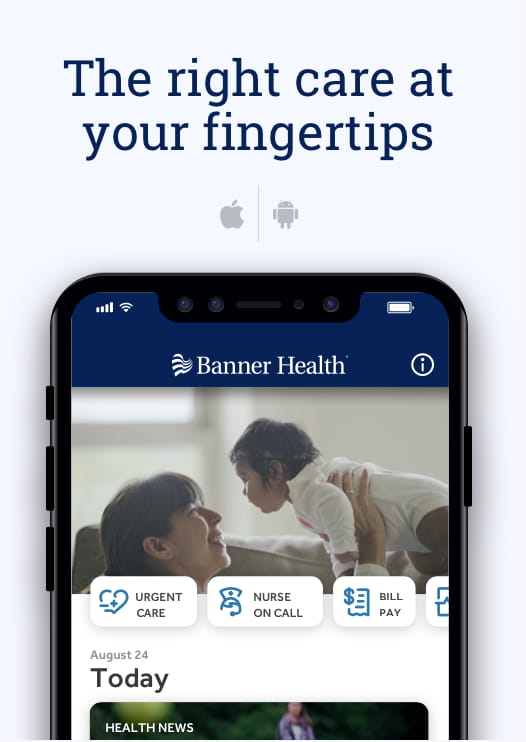When your baby comes down with a fever, tensions are high. They’re uncomfortable and that means more crying, less napping and constant temperature checking by mom and dad. Sick kiddos are not exactly a recipe for relaxation. But when your child suffers from febrile seizures, your concern as a parent is even more elevated. We reached out to Gina Montion, MD, a pediatrician with Banner Children's, to help answer your questions and facilitate a safe response if your child’s fever produces a seizure.
Why do febrile seizures occur?
“The same chemicals released by your immune system to create a fever can also increase neuron excitability,” explained Dr. Montion. This reaction is most common among small children. According to the National Institute of Neurological Disorders and Stroke (NINDS), “young children between the ages of about 6 months and 5 years old are the most likely to experience febrile seizures; this risk peaks during the second year of life.” It’s an intimidating thought for new parents, but the likelihood of you and your child going thorough it is still low. The NINDS estimates about 2-5% of children under five will experience a febrile seizure.
How can I lower my child’s risk?
“Most febrile seizures occur with a rapid increase in fever or fevers reaching very high temperatures like 104 degrees,” advised Dr. Montion. Periodically checking your child’s temperature when they come down with a fever is an important step in predicting risk for febrile seizure.
“There’s no need to chase a fever in a child who doesn’t have a history of febrile seizures,” said Dr. Montion. “But parents of children with a history of febrile seizures may want to use scheduled acetaminophen or ibuprofen doses during the first couple days of [the child’s fever].” Although some sources will suggest alternating between acetaminophen and ibuprofen, Dr. Montion noted that there is no science to suggest that this is necessary.
How can I recognize a febrile seizure?
The NINDS identifies the vast majority of seizures as convulsions. In most cases, the child will lose consciousness and both arms and legs will shake uncontrollably, although shaking is not always present.
What should I do when a febrile seizure occurs?
1. Note the time
It can be a frightening thing for parents when a febrile seizure begins. Having the presence of mind to check the time is important, as time is one of the greatest indicators of a seizure’s severity.
2. Call an ambulance if the seizure lasts longer than 5 minutes
“Simple febrile seizures tend to stop after a few minutes,” noted Dr. Montion. If the child’s seizure continues beyond about five minutes or if the child doesn’t seem to be recovering quickly, it may be time to call for immediate assistance.
3. Make sure the child is on a protected surface
Gently move the child to a surface where injury is least likely. This usually means the floor where they aren’t able to fall. Do not restrain the child or try to hold them in your arms.
4. Position the child on their side and clear airways
When possible, carefully remove any obstructions from the child’s mouth to prevent choking. Placing your child on their side will help ensure that they do not choke on saliva or any foam that collects in the back of the throat.
5. Seek immediate medical attention for first cases
Once the seizure has ended, take the child to meet with a doctor. Especially in cases where the child is behaving or moving strangely afterward.
Although the experience can be jarring, parents can take comfort in the fact that most brief febrile seizures are not known to cause long-term health problems. Schedule a visit with a Banner Health pediatrician to learn more about the causes and risks for your child.
Don’t hesitate to schedule a visit, even during the pandemic. Virtual visits allow patients and their families to stay home and communicate with their physicians using a video visit. Speak with your doctor to see if this is a possibility for your next visit.


